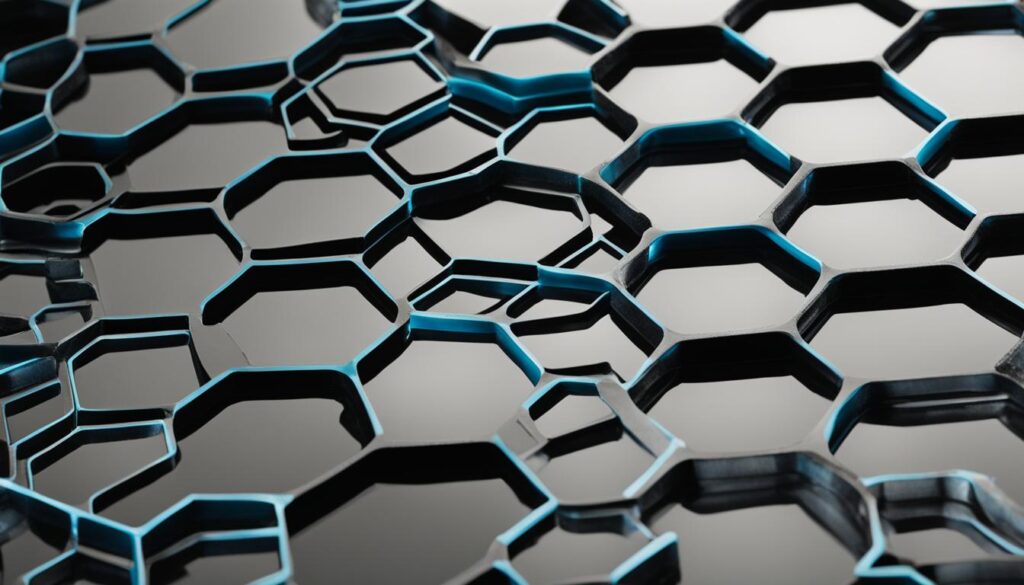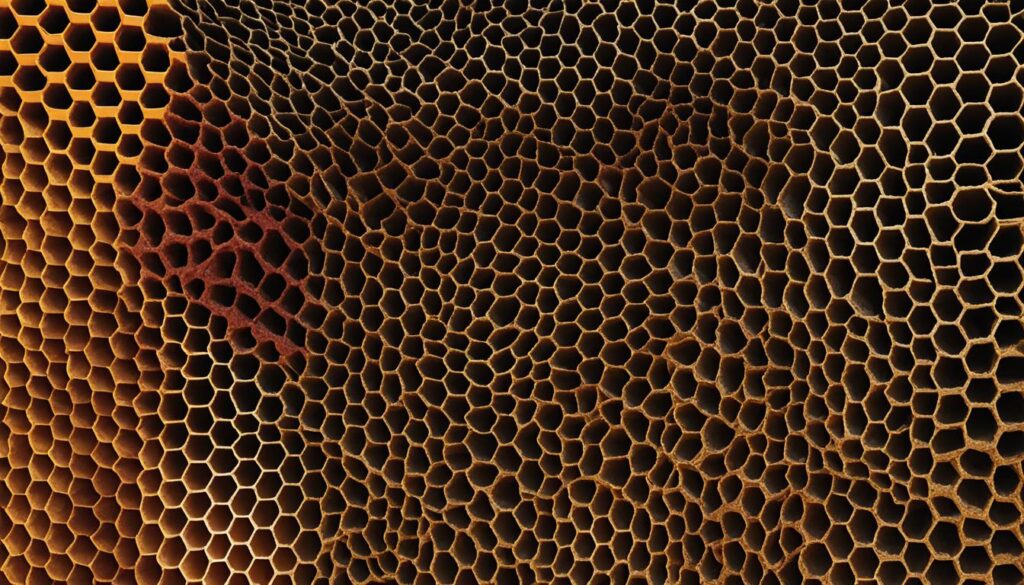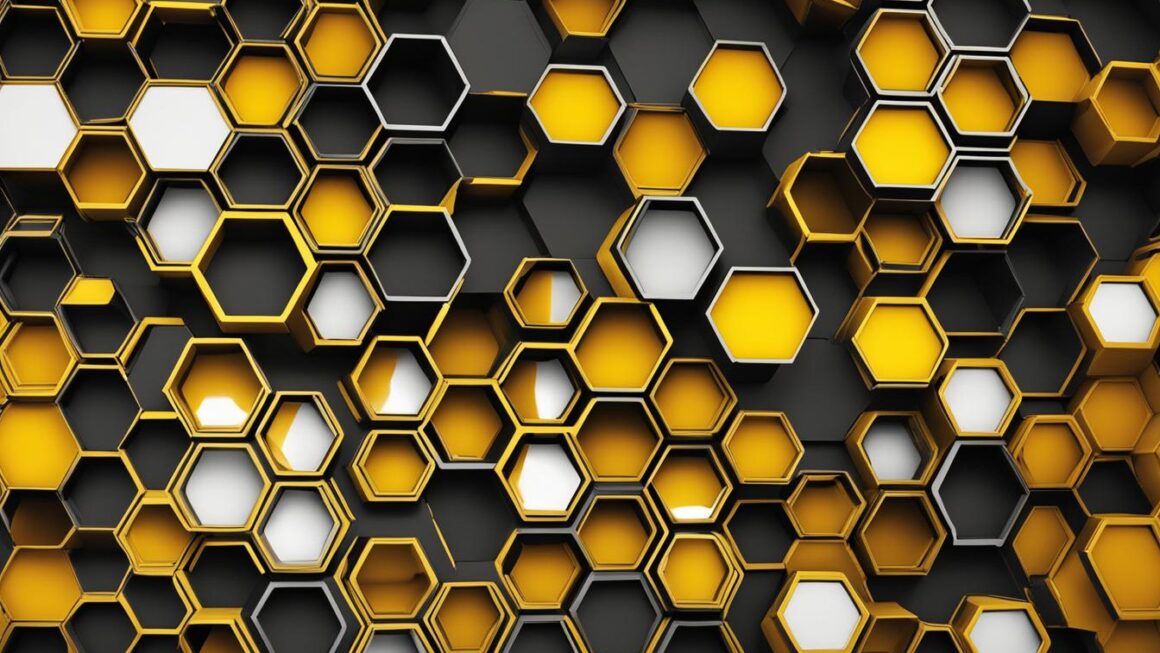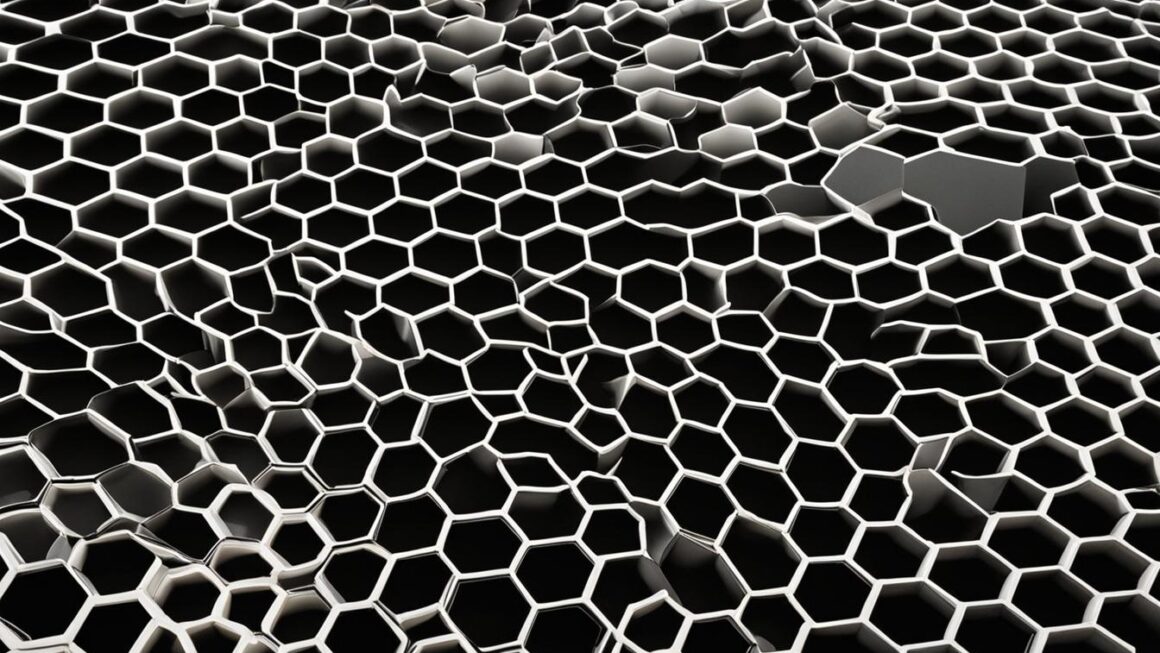3D honeycomb infill is a technique used in 3D printing to enhance the structural integrity and durability of printed objects. It involves filling the internal space of an object with a honeycomb-like structure, which provides support, strength, and impact resistance. This technique is widely used in industries such as aerospace, marine, and automobile, where lightweight and impact-resistant materials are crucial.
Honeycomb structures have been extensively researched and proven to have superior mechanical properties, including specific stiffness, strength, and toughness. By adjusting architectural parameters such as cell configuration, size, height, and thickness, the mechanical properties of honeycomb structures can be optimized. Honeycombs are known for their high energy absorption capacity, making them ideal for use as shock absorbers in various applications. They also play a vital role as core materials in sandwich structures, providing stability and stiffness.
With recent advancements in 3D printing technologies, it has become easier to fabricate complex honeycomb structures using a variety of materials. Additionally, researchers are exploring the use of property gradient and geometrically graded designs to further improve the energy absorption capacity of honeycomb structures. In this article, we will explore the benefits and design considerations of 3D honeycomb infill in additive manufacturing.
Key Takeaways:
- 3D honeycomb infill enhances the structural integrity of printed objects.
- Honeycomb structures have superior mechanical properties, including specific stiffness, strength, and toughness.
- Adjusting architectural parameters can optimize the mechanical properties of honeycomb structures.
- Honeycomb structures have high energy absorption capacity and can function as shock absorbers.
- Advancements in 3D printing technologies enable the fabrication of complex honeycomb structures.
The Importance of Lightweight and Impact Resistant Structures in Various Industries
The use of lightweight and impact-resistant structures is crucial in industries such as aerospace, marine, and automobile. These industries prioritize crashworthiness, human safety, legislative requirements, and fuel consumption reduction. Traditional solid structures are often heavy and not optimized for impact resistance. However, the introduction of lightweight cellular structures, such as honeycombs, has revolutionized these industries. Honeycomb structures offer exceptional mechanical properties, including strength, stiffness, and toughness, despite their lightweight nature. By incorporating honeycomb structures into critical components, the overall structural integrity of the system can be greatly enhanced, reducing the risk of failure and improving safety.
“Honeycombs have superior mechanical properties, including specific stiffness, strength, and toughness.”
Honeycomb structures have been extensively researched and proven to have excellent energy absorption capabilities, making them ideal for impact resistance. They are known for their high energy absorption capacity, which makes them suitable for use as shock absorbers in various applications. Additionally, honeycombs play a vital role as core materials in sandwich structures, providing stability and stiffness. By incorporating honeycomb infill in additive manufacturing, the crashworthiness of structures can be greatly enhanced, meeting safety requirements in industries such as aerospace, marine, and automobile.
As the demand for lightweight and impact-resistant structures continues to grow, industries are increasingly adopting honeycomb infill patterns and optimizing their design considerations. The choice of honeycomb infill pattern depends on factors such as the specific application, desired energy absorption, and structural optimization. The geometric parameters of honeycomb structures, such as cell size, wall thickness, and core topology, play a crucial role in determining the mechanical properties and energy absorption characteristics of the final printed object.
“Honeycomb infill offers significant weight reduction while maintaining or enhancing the mechanical properties of printed objects.”
With advancements in additive manufacturing technologies, including 3D printing, the fabrication of complex honeycomb structures has become more accessible. Additive manufacturing allows for the precise control of internal geometry and architectural parameters, enabling the production of lightweight, strong, and impact-resistant honeycomb structures. Researchers are continually exploring new materials and fabrication techniques to further optimize the mechanical properties and energy absorption characteristics of honeycomb structures. As additive manufacturing continues to advance, the application of honeycomb infill is expected to expand, offering improved structural performance and new possibilities for design and optimization in various industries.
The Mechanical Properties and Energy Absorption Characteristics of Honeycomb Structures
Honeycomb structures are known for their remarkable mechanical properties and energy absorption characteristics. These structures have been extensively researched and proven to be highly effective in various applications requiring lightweight and impact-resistant materials. Honeycomb infill, with its unique honeycomb-like structure, plays a vital role in enhancing the structural integrity and crashworthiness of 3D printed objects.
When it comes to mechanical properties, honeycomb structures exhibit exceptional strength, stiffness, and toughness. The specific geometry and architectural parameters of honeycomb structures, such as cell configuration, size, height, and thickness, can be adjusted to optimize their mechanical properties for specific applications. This adjustability makes honeycomb structures versatile and suitable for a wide range of industries, from aerospace and marine to automotive and construction.
One of the key advantages of honeycomb structures is their energy absorption capacity. These structures are capable of absorbing a significant amount of kinetic energy through irreversible deformation processes. This makes them ideal for impact resistance applications, where the ability to withstand and dissipate energy is crucial. The energy absorption capacity of honeycomb structures can be further improved by introducing gradients in material properties or adopting geometrically graded designs.
| Mechanical Properties | Energy Absorption Characteristics |
|---|---|
| Superior strength, stiffness, and toughness | High energy absorption capacity |
| Adjustable architectural parameters for optimization | Irreversible deformation processes for impact resistance |
| Wide range of applications in various industries | Gradients in material properties for enhanced energy absorption |
In summary, honeycomb structures possess excellent mechanical properties and energy absorption characteristics, making them highly desirable for lightweight and impact-resistant structures. The ability to adjust their architectural parameters and introduce material gradients further enhances their performance. By understanding and optimizing the mechanical properties and energy absorption characteristics of honeycomb structures, designers and engineers can create 3D printed objects with superior strength, durability, and crashworthiness.
Exploring Different Honeycomb Infill Patterns and Design Considerations
Honeycomb infill patterns play a crucial role in optimizing the mechanical properties and structural integrity of printed objects. The choice of infill pattern depends on various factors, such as the specific application requirements and desired balance between strength and weight. While the hexagonal cell geometry is the most common and widely used honeycomb infill pattern, other cell geometries, such as triangular, circular, square, and pyramidal trusses, offer different advantages and can be explored for specific applications.
Honeycomb Infill Patterns:
| Infill Pattern | Description | Advantages |
|---|---|---|
| Hexagonal | The most common pattern, offering excellent mechanical properties and structural stability. | High strength-to-weight ratio, good impact resistance. |
| Triangular | Consists of interconnected triangles, providing additional stability and rigidity. | Enhanced structural stability, improved load-bearing capacity. |
| Circular | Composed of interconnected circles, offering a unique aesthetic appeal. | Smooth surface finish, reduced stress concentration. |
| Square | Consists of interconnected squares, providing a uniform distribution of load. | Even stress distribution, enhanced overall strength. |
Design considerations should focus on achieving the desired balance between strength, weight, and stability. The architectural parameters of the honeycomb structure, such as cell size, wall thickness, internal angles, and core topology, also play a significant role in determining the mechanical properties and energy absorption characteristics of the printed object. By adjusting these parameters, designers can optimize the honeycomb infill to meet specific application requirements and achieve the desired performance.
“The choice of honeycomb infill pattern should be based on the specific application requirements and the desired balance between strength and weight.”
Structural Optimization and Mechanical Properties
Structural optimization is a key consideration when designing honeycomb infill. The primary goal is to achieve the optimal balance between weight reduction and mechanical strength. By selecting the right infill pattern and adjusting the architectural parameters, designers can enhance the structural integrity and maximize the mechanical properties of the printed object.
Various factors come into play during the design process, including the material properties, infill density, and print settings. The material properties of the infill material affect its strength, stiffness, and impact resistance. The infill density, which determines the amount of material used to fill the honeycomb structure, impacts the weight and overall strength of the printed object. Print settings such as layer thickness, nozzle temperature, and printing speed influence the surface finish and mechanical properties of the printed object.
By carefully considering these design factors and conducting testing and analysis, designers can optimize honeycomb infill for specific applications, achieving the desired strength and structural integrity while minimizing weight and material consumption.
Advancements in Additive Manufacturing for Honeycomb Infill
Additive manufacturing, particularly 3D printing, has opened up new possibilities for fabricating honeycomb structures with enhanced strength and durability. This technology allows for the precise control of internal geometry and architectural parameters, making it ideal for creating complex bio-inspired structures. With advancements in 3D printing technologies, it is now easier than ever to economically produce graded cellular architectures using a variety of materials, including polymers, metals, and composites.
“Additive manufacturing allows for the production of lightweight, strong, and impact-resistant honeycomb structures with enhanced structural integrity and durability.”
Material compatibility is a crucial consideration in additive manufacturing. Different materials exhibit different mechanical properties, and it is important to choose the right material for the desired application. Researchers are constantly exploring new materials and fabrication techniques to optimize the mechanical properties and energy absorption characteristics of honeycomb structures. By using advanced materials and additive manufacturing techniques, manufacturers can produce honeycomb structures that meet specific requirements and provide superior performance.
| Advancements in Additive Manufacturing for Honeycomb Infill | Impact |
|---|---|
| Complex bio-inspired structures | Allows for the fabrication of intricate honeycomb designs that mimic natural structures for optimized mechanical properties and energy absorption. |
| Material compatibility | Enables the use of a wide range of materials, including polymers, metals, and composites, to achieve the desired mechanical properties. |
| Precise control of internal geometry | Allows for the customization of honeycomb structures, tailoring them to specific applications and optimizing their performance. |
| Improved structural integrity and durability | Produces lightweight, strong, and impact-resistant honeycomb structures that offer enhanced structural integrity and durability. |
“Additive manufacturing, particularly 3D printing, has revolutionized the fabrication of honeycomb structures.”
The advancements in additive manufacturing have transformed the way honeycomb infill is applied in various industries. The ability to produce lightweight, strong, and impact-resistant structures has opened up new possibilities in aerospace, marine, automotive, and construction applications. As additive manufacturing continues to advance, the application of honeycomb infill is expected to grow, offering improved structural performance and further enhancing the benefits of this innovative technique.
Optimizing Honeycomb Infill for Enhanced Performance
When it comes to achieving enhanced performance in 3D printing, optimizing honeycomb infill plays a crucial role. By adjusting various parameters, such as infill density and print settings, manufacturers can optimize the mechanical properties and material consumption of printed objects.
The infill density, which determines the amount of material used in the honeycomb structure, can be adjusted based on the desired balance between strength, print reliability, print time, and material consumption. Generally, an infill density of 10-20% is considered ideal for achieving a balance between these factors. However, for specific applications, a lower infill density of 5% or lower may be sufficient.
Other print settings, such as layer thickness, nozzle temperature, and printing speed, can also be adjusted to optimize the mechanical properties and surface finish of printed objects. By carefully tuning these parameters, manufacturers can fine-tune the strength, durability, and overall performance of the printed objects.
“By optimizing the design and infill settings, manufacturers can achieve high-strength, lightweight, and cost-efficient printed objects.”
It is important to consider the specific requirements of the application and conduct testing and analysis to determine the optimal honeycomb infill settings for each case. By taking a systematic approach to optimizing honeycomb infill, manufacturers can ensure that their printed objects meet the desired performance criteria while minimizing material consumption.

Comparing Honeycomb Infill vs Solid Infill
In the world of 3D printing, choosing between honeycomb infill and solid infill can have a significant impact on the performance and characteristics of the printed object. Honeycomb infill patterns offer unique advantages over solid infill, particularly in terms of weight reduction and material consumption.
When comparing honeycomb infill with solid infill, one of the key benefits is weight reduction. Honeycomb structures, with their hollow cells, significantly reduce the amount of material used compared to solid infill. This weight reduction can lead to improved fuel efficiency, lower material costs, and overall lighter structures.
“Honeycomb infill offers significant weight reduction compared to solid infill while maintaining or even enhancing the mechanical properties of the printed object.”
While solid infill may offer slightly higher mechanical properties in terms of stiffness and strength, the increased weight and material consumption can be significant drawbacks. In many applications, the optimal strength-to-weight ratio provided by honeycomb infill makes it the preferred choice.
Whether you choose honeycomb infill or solid infill depends on the specific requirements of your application. If weight reduction and material consumption are key considerations, honeycomb infill is the way to go. However, if absolute strength is the primary concern, solid infill might be more suitable.
| Honeycomb Infill | Solid Infill |
|---|---|
| Weight reduction | Higher mechanical properties |
| Optimal strength-to-weight ratio | Increased weight and material consumption |
| Ideal for lightweight structures | Ideal for applications requiring high strength |
Table: Comparison between honeycomb infill and solid infill
By carefully considering the trade-offs and specific requirements of your project, you can make an informed decision between honeycomb infill and solid infill, ultimately achieving the desired performance and characteristics for your 3D printed object.

Design Considerations for Honeycomb Infill Strength Analysis
Designing honeycomb infill for optimal strength requires careful consideration of various factors. The geometric parameters of the honeycomb structure, such as cell configuration, size, and wall thickness, significantly impact its strength and energy absorption characteristics. By adjusting these parameters, the crushing strength and crashworthiness of honeycomb structures can be enhanced. Additionally, the material properties of the infill material, such as Young’s modulus and yield strength, play a crucial role in determining the overall strength of the printed object.
Structural analysis techniques, such as numerical simulations and experimental testing, can be used to evaluate the strength and performance of honeycomb infill designs. By combining knowledge of material properties, geometric parameters, and structural analysis, designers can optimize honeycomb infill for specific applications and achieve the desired strength and structural integrity.
When conducting a strength analysis for honeycomb infill design, it is essential to consider the specific requirements of the application and the expected loads and forces that the printed object will undergo. This analysis can help ensure that the honeycomb infill structure can withstand these loads and provide the necessary support and impact resistance. Additionally, considering the geometric parameters of the honeycomb structure, such as the cell configuration and size, can help optimize the design for strength while minimizing weight and material usage.
In conclusion, honeycomb infill design requires a thorough understanding of the geometric parameters, material properties, and structural analysis techniques. By carefully considering these factors, designers can optimize the strength and performance of honeycomb infill structures for various applications, achieving enhanced structural integrity and durability.
| Design Considerations | Impact on Strength |
|---|---|
| Cell Configuration | Optimizing the shape and arrangement of the honeycomb cells can enhance the overall strength of the infill structure. |
| Size and Wall Thickness | Adjusting these parameters can significantly impact the crushing strength and crashworthiness of the honeycomb infill. |
| Material Properties | Choosing infill materials with appropriate mechanical properties, such as high Young’s modulus and yield strength, can improve the overall strength of the printed object. |
| Structural Analysis | Utilizing numerical simulations and experimental testing can help evaluate the strength and performance of honeycomb infill designs, enabling optimization for specific applications. |
| Load and Force Considerations | Considering the expected loads and forces that the printed object will undergo enables the design of honeycomb infill structures that can withstand these forces and provide the necessary support. |
Applying Honeycomb Infill in Additive Manufacturing
The application of honeycomb infill in additive manufacturing has revolutionized the production of impact-resistant and lightweight structures. With the advancement in 3D printing technologies, manufacturers can fabricate complex honeycomb structures layer-by-layer, allowing for precise control over the internal geometry and architectural parameters. Honeycomb infill finds extensive usage in industries such as aerospace, marine, automotive, and construction, where the need for strong and lightweight structures is paramount.
One of the key benefits of applying honeycomb infill in additive manufacturing is its ability to enhance impact resistance. The unique cellular structure of honeycombs allows them to absorb a large amount of kinetic energy through irreversible deformation processes. This makes honeycombs ideal for applications requiring structural integrity and crashworthiness. By incorporating honeycomb infill in critical components of aircraft, boats, and automobiles, manufacturers can enhance impact resistance, reduce weight, and improve safety.
Additive manufacturing also offers the flexibility to optimize honeycomb infill for specific applications. Design considerations such as cell configuration, size, and wall thickness can be adjusted to achieve the desired mechanical properties and energy absorption characteristics. Additionally, infill density and print settings can be fine-tuned to strike a balance between strength, print reliability, and material consumption. This level of customization allows manufacturers to produce high-strength, lightweight, and cost-efficient printed objects.
As additive manufacturing continues to advance, the application of honeycomb infill is expected to expand further. With ongoing research and development, new materials and fabrication techniques are being explored to optimize the mechanical properties and energy absorption capacity of honeycomb structures. The combination of additive manufacturing and honeycomb infill enables the production of innovative and efficient structures, paving the way for future advancements in various industries.
Table: Applications of Honeycomb Infill in Additive Manufacturing
| Industry | Application |
|---|---|
| Aerospace | Structural components, crash structures |
| Marine | Boat hulls, buoyancy devices |
| Automotive | Impact-absorbing components, crash structures |
| Construction | Structural elements, lightweight panels |
Conclusion
In conclusion, 3D honeycomb infill is a game-changer in additive manufacturing, offering a multitude of benefits for enhancing the structural integrity and durability of printed objects. By leveraging the lightweight and impact-resistant properties of honeycomb structures, manufacturers can achieve superior mechanical properties and optimize material consumption.
The precise control of geometric parameters and infill density in honeycomb design allows for customization to meet specific application requirements. This flexibility, coupled with advancements in additive manufacturing technologies, enables the production of high-strength, lightweight, and cost-efficient printed objects.
With its wide range of applications in industries such as aerospace, marine, automotive, and construction, honeycomb infill has proven its value in creating impact-resistant and lightweight structures. As the additive manufacturing industry continues to evolve, we can expect further advancements in honeycomb infill design and optimization, offering improved structural performance and expanding possibilities for innovative designs.
FAQ
What is 3D honeycomb infill?
3D honeycomb infill is a technique used in 3D printing to enhance the structural integrity and durability of printed objects. It involves filling the internal space of an object with a honeycomb-like structure, which provides support, strength, and impact resistance.
Where is 3D honeycomb infill commonly used?
3D honeycomb infill is widely used in industries such as aerospace, marine, and automobile, where lightweight and impact-resistant materials are crucial.
What are the benefits of honeycomb infill?
Honeycomb structures have superior mechanical properties, including specific stiffness, strength, and toughness. They also have high energy absorption capacity, making them ideal for use as shock absorbers and core materials in sandwich structures. Honeycomb infill can greatly enhance the crashworthiness of structures and meet safety requirements.
How are honeycomb infill patterns designed?
Honeycomb infill patterns can vary based on the desired mechanical properties and design considerations. The most common honeycomb infill pattern is the hexagonal cell geometry, but other cell geometries like triangular, circular, square, and pyramidal trusses have also been explored.
What are the considerations for optimizing honeycomb infill in 3D printing?
The infill density, layer thickness, nozzle temperature, and printing speed can be adjusted to optimize the mechanical properties, energy absorption, and material consumption of printed objects.
How does honeycomb infill compare to solid infill?
Honeycomb infill offers significant weight reduction compared to solid infill while maintaining or enhancing the mechanical properties of the printed object.
How can honeycomb infill be applied in additive manufacturing?
Honeycomb infill is widely used in industries such as aerospace, marine, automotive, and construction for lightweight and impact-resistant structures.




